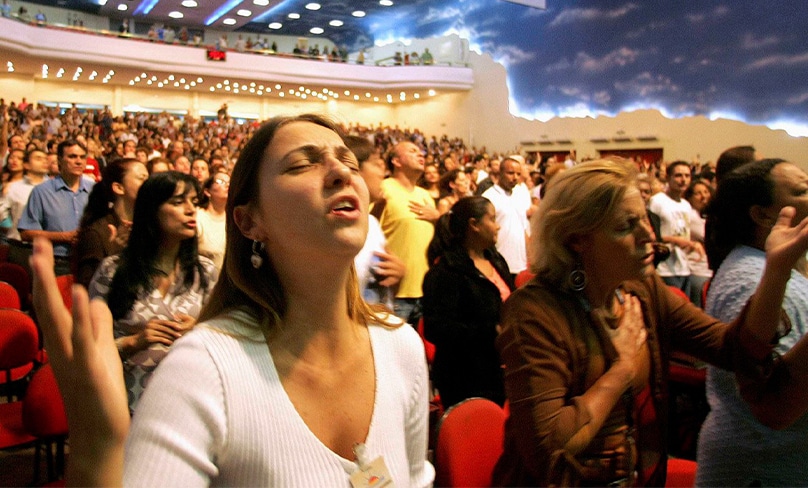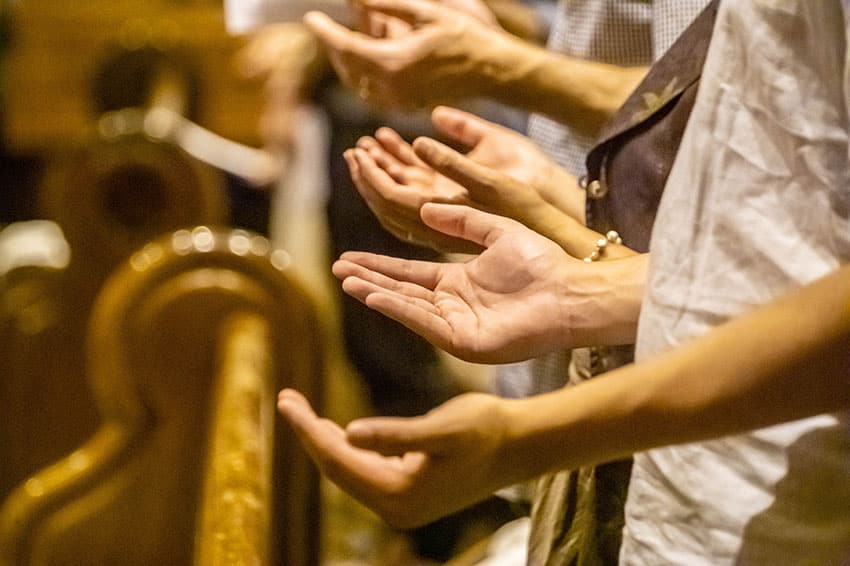
The latest statistics from the Australian Community Survey are in, and confirm a trend of the last few years: young Australians attend Church more often than their parents or grandparents, are more open to faith, and try more often to become a part of a Church community only to be locked out or to leave. While the statistics aren’t broken down by denomination, it’s probably fair to say that the 32% of young adults attending Church at least monthly are more likely at Hillsong rather than St Joseph’s.
Why is it that the child or grandchild of a devout Catholic is more likely to pen “no religion” on the census or to attend a Pentecostal community than practice the faith in which they were raised? There’s no easy answer—although many Catholics have their theories.
Perhaps one factor, as the philosopher Bruno Latour identified in Rejoicing: Or the Torments of Religious Speech, is that the act of confessing faith in contemporary society is buried under countless sub-strata of controversies, commentaries, critiques, translations, cultural removes and academic studies. It is hard to believe, hard to pray, because it’s hard to reach the language of prayer when language makes so many competing demands on us each day:
“Although Latour aimed his critique partly at the “heaviness” of traditional language, younger generations are finding that traditional forms of faith, detached from the unpleasant connotations held by their elders, also offer them a new freedom to speak, to pray.”
“It is not of the religious that he wants to speak, not of the fact of religion. It is not of that vast stratum of institutions, law, psychology, rituals, politics, art, cultures, monuments and myths … The only thing he wants to reactivate is religious utterance … to disinter a form of expression that used to be so free and inventive, fruitful and saving in days gone by, but that now dries on his tongue whenever he tries to recover its movement, excitement, its structure.”
Perhaps this is one explanation for why young Christians seek out the Pentecostals, where they worship God using contemporary pop music, in the contemporary language of self-care, self-affirmation and self-esteem (and perhaps even self-enrichment). Pentecostals take God and make it acceptable to talk about Him without any reference whatsoever to the last two thousand years of Christian jargon – they simply leave all that behind for “legacy” Churches to squabble over.

But doesn’t it also partly explain the appeal of what has been called the “weird Catholic” revival among youth? Although Latour aimed his critique partly at the “heaviness” of traditional language, younger generations are finding that traditional forms of faith, detached from the unpleasant connotations held by their elders, also offer them a new freedom to speak, to pray. They find in the Church’s traditional forms of prayer an idiom that is “ever ancient, ever new” by virtue of its alienation from the everyday English of business, media, chores. They are prepared to learn the faith, and the meaning of its concepts and ways of belonging. Like the sparrow and swallow evoked by the Psalmist, the young find a nest “at your altars, O Lord of hosts” (Ps 84:3).
Consequently, the worst possible religious vocabulary for the Church would be the one we are on the verge of adopting in a matter of weeks. The language of the Framework for Motions, and the Plenary Council more broadly, is a mixture of bureaucratic jargon and official theology. It expresses the concerns of older generations and is nearly unintelligible to youth. Perhaps it is the case that official documents require such a vocabulary, but it is not the language of faith, prayer and tradition. The irony is, of course, that these very documents have been ostensibly produced by spiritual discernment and have been offered to Plenary members for prayerful reflection.
“As Latour writes, those who claim to save a man drowning in the difficulties of religious speech instead push his head underwater …”
If this jargon finds its way into the pulpit and confessional its oddness will lock more Catholics out of the life of prayer, and as the ACS data shows, it will lock more youth out of the Church. The Plenary Council therefore offers us an opportunity to more carefully distinguish the various kinds of speech we use, and to ask whether our official languages have drifted too far from their origins in scripture and liturgical worship.
As Latour writes, those who claim to save a man drowning in the difficulties of religious speech instead push his head underwater; “instead of throwing him a lifebuoy, throwing words as heavy as a mooring buoy at him. Weighted with lead, that’s it – they’ve weighted him with lead.”
If youth are to risk the challenge of faith, to swim the oceans of religious doubt and confusion, and to find our parishes to be “truly welcoming”, as the Plenary demands, they’ll need a lighter language than what the Church is preparing to give them: they need the vocabulary of the Saints.
